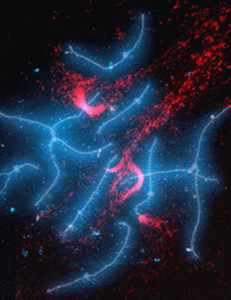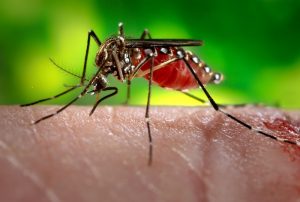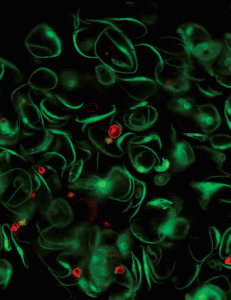Enter your address to receive notifications about new posts to your email.
Science & Publishing
-
Science & Publishing
Cause of neurological disorder in Belgian Shepherds discovered
Malinois dogs are working animals known for being used by the Secret Service to guard the White House. These dogs, a subtype of the Belgian Shepherd breed, are robust, with an average life expectancy of 10-12 years. But some puppies are afflicted by a genetic condition called spongy degeneration with cerebellar ataxia (SDCA). A puppy…
-
Science & Publishing
September GENETICS Highlights
Check out the September issue of GENETICS by looking at the highlights or the full table of contents! ISSUE HIGHLIGHTS MicroRNAs that contribute to coordinating the immune response in Drosophila melanogaster, pp. 163-178 Magda L. Atilano, Marcus Glittenberg, Annabel Monteiro, Richard R. Copley, and Petros Ligoxygakis Atilano et al. present a Drosophila post-infection survival screen that takes advantage of a library…
-
Science & Publishing
Switching biofilm formation on and off in yeast
When a group of microorganisms needs to stick together, they build a biofilm. The cells cement themselves together onto a surface, forming durable structures that are notoriously hard to remove. In a medical setting, biofilms can contribute to dangerous antibiotic resistance. In the August issue of G3, Cromie et al. use a yeast model to…
-
Science & Publishing
Chemical preserves mouse fertility after radiation
After surviving breast cancer, almost forty percent of female patients are affected by primary ovarian insufficiency (POI). This condition, in which ovaries don’t produce normal amounts of hormones or release eggs regularly, can result in health problems and an inability to have children. But POI isn’t caused by cancer itself—the actual culprit is DNA damage…
-
Science & Publishing
Gene flow from crops into weeds depends on genome location
Even though domestic plants usually appear radically different from their wild relatives, they are often still able to interbreed. For transgenic crops carrying traits like herbicide resistance, this flexibility could pose a problem if they were to pollinate weedy relatives nearby. In the July issue of GENETICS, Adamczyk-Chauvat et al. examine the extent to which…
-
Science & Publishing
How the genetics of seizure susceptibility changes over time
Epilepsy is characterized by recurrent seizures, often with no immediately obvious cause. In the August issue of G3, Ferland et al. use a genome-wide association study in mice to show that after multiple seizures, the genetic basis of seizure variation shifts from previously identified genomic regions to new ones. This research shows that the genetic…
-
Science & Publishing
Fast-evolving female-biased genes defy expectations in mosquitoes
Genes involved in male reproduction tend to evolve rapidly. This has been observed in many different species and is thought to be due to sexual selection as males compete over mating opportunities. But in the August issue of GENETICS, Whittle and Extavour present results that flip this paradigm upside down. They find that in the…
-
Science & Publishing
Revisiting Waddington: A new explanation for an old experiment
In the 1940s, C. H. Waddington discovered a peculiar phenomenon in fruit flies: traits could appear in response to environmental stress in an individual’s lifetime and then be passed down to future generations. Waddington proposed that this wasn’t the inheritance of acquired traits, but actually due to pre-existing genetic variation that had no effect until…
-
Science & Publishing
New in G3: Yorkie signaling, rice hybrid incompatibility, and a wasp genome
Check out the August issue of G3! Table of Contents Genome Reports Whole Genome Sequencing of the Braconid Parasitoid Wasp Fopius arisanus, an Important Biocontrol Agent of Pest Tepritid Fruit Flies Scott M. Geib, Guang Hong Liang, Terence D. Murphy, Sheina B. Sim G3: Genes, Genomes, Genetics August 2017 7: 2407-2411; DOI: https://doi.org/10.1534/g3.117.040741 Comparative Genomics of Two Sequential…
-
Science & Publishing
Lineage specific retrotransposons shaped the genome evolution of domesticated rice
Rice is one of the most important food crops on earth. Like many other plants, the genome of this critical global species is dominated by transposable elements—selfish genes that multiply themselves to the detriment of their host. In the June issue of G3, Zhang and Gao analyze the genomic long terminal repeat (LTR) retrotransposon content…
-
Science & Publishing
August GENETICS Highlights
Check out the August issue of GENETICS by looking at the highlights or the full table of contents! ISSUE HIGHLIGHTS Evolving Mistranslating tRNAs Through a Phenotypically Ambivalent Intermediate in Saccharomyces cerevisiae, pp. 1865–1879 M. D. Berg, K. S. Hoffman, J. Genereaux, S. Mian, R. S. Trussler, D. B. Haniford, P. O´Donoghue, and C. J. Brandl It is increasingly apparent that the…












